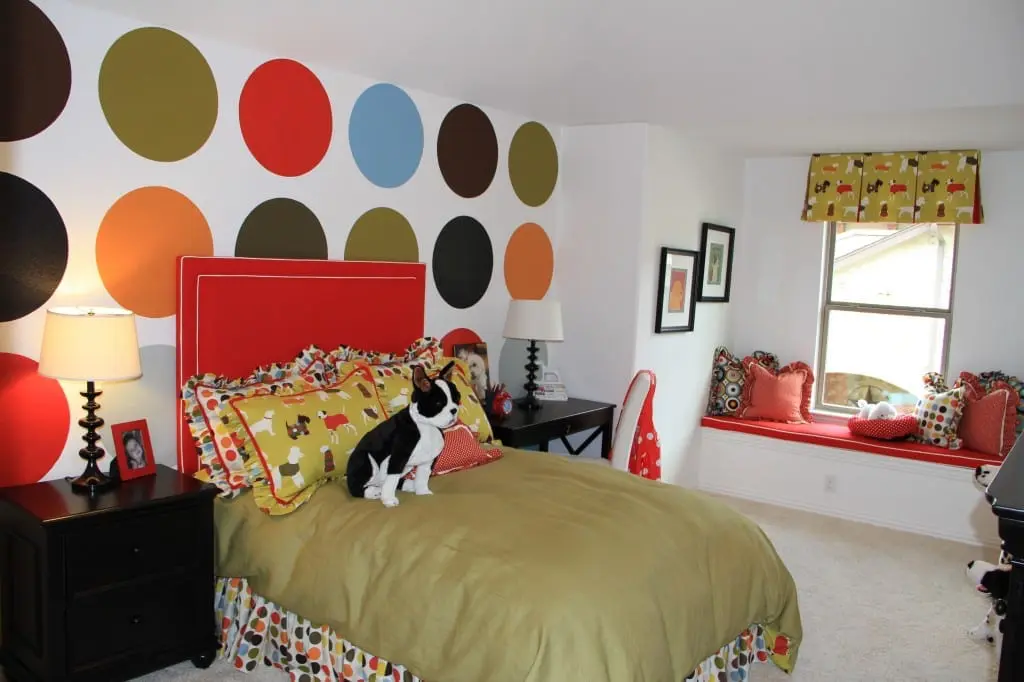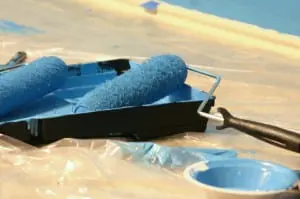
There comes a time in the life of a homeowner when you ask yourself one of life’s great questions: Is it time to paint? If your answer is yes, read on. You’ll learn to paint like a pro — in a snap!
We’ll assume you’ve chosen your color — a separate matter, addressed in the Design section of the Resource Guide on www.NewHomeSource.com. Here, you’ll master which paint, brushes and rollers to use based on the job at hand. You’ll also earn a black belt in prep work.
VALUABLE PAINTING TIP #1
Generations of homeowners have discovered a canny tactic to lure friends and family to help paint: Host a party. Provide pizza. Invite guests to write on the walls before you paint – just make sure you use materials that won’t show through the new paint. (If you use a good primer coat, as recommended below, that won’t be a problem.)
But before you recruit your crew, you have some simple choices to make, some inexpensive tools to acquire, and a bit of easy prep.
WHICH TYPE OF PAINT?
Paints come in two main types — latex (water-based) and alkyd (oil-based) — and different levels of gloss or sheen:
- Flat – a flat, even look with no gloss or shine
- Semi-gloss – a shinier look
- Glossy – the shiniest of finishes
- Egg-shell or satin finish – a balance between flat and gloss
When using latex, you can clean your brush for reuse with soap and water. When using oil-based paints, clean your brush with paint thinner (also known as mineral spirits). Latex drys more quickly between coats. Latex is the easiest to work with and is typically used for interior and often exterior wall surfaces where a smooth, even finish is desired.
Oil-based paints provide a glossier finish and can be more durable. Typical uses include kitchen cabinets and interior and exterior trim. Many people prefer a high-gloss finish on trim, crown molding, chair rails and even wainscoting to contrast with flat wall paint. Oil-based paints are also used in areas with higher moisture, such as a bathroom.
Whether you choose oil or latex, there are three key P’s before you’re ready to paint: Prep, Primer and Patience.
THE POWER OF PREP
- Buy more than enough paint. Measure the height and width of walls. You or your store can convert that to square footage. Buy more than you need. Not only will you have the best color match across multiple cans, you’ll have extra left over for future touch-up work.
- Get the right tools. Your store will advise you on the best brushes and rollers to use, based on the task and the type of paint you use. They’re pro’s, so take their advice to heart.
- Don’t forget paint trays and extension handles/poles for your rollers if you’re working higher up on walls or ceilings.
- Invest in masking tape and buy inexpensive drop cloths
- Have your store shake each can before you leave the store. They’ll use special machines to shake the sealed can vigorously.
- Grab free stirrers before you leave the store and stir the paint one more time at home to help insure consistent color.
- Clean the surface and work area carefully before you start. Dust is the enemy of a smooth finish. Banish it before you start and while each coat dries.
- Remove loose paint by light sanding. Clean this dust, too, before you start.
- Use masking tape and drop cloths or newspapers to protect non-work areas where no paint is desired. You’ll be glad you did. Drips and spills happen.
DON’T SKIP THE PRIMER COAT
- A first coat of primer is a good idea – and the most neglected step when you first learn to paint.
- Primer makes your top or finish coats of paint look richer – more even and longer lasting.
- Choose the right primer – your store will recommend the right type of primer for the latex or oil paint you’ve chosen.
- Let the primer dry completely – before applying the next coat. The small type on the can is well-researched and authoritative. Follow that advice on drying time…which leads us to:
PATIENCE IS YOUR BEST TOOL
- A little time invested in prep and a bit of patience during the job pays great rewards.
A drop cloth and masking tape are your best friend.
SUMMING UP
- Choose the right tools – paint, brushes and tools for each task.
- Measure the area – and buy extra paint.
- Clean and prep – the surface and area.
- Spackle and sand dents – before you prime, sand, and clean dust.
- Keep all dust to a minimum as you work – and as each coat dries.
- Mask/drape – with drop cloth and tape to protect unpainted areas from inevitable drips and spills.
- Remove covers to electrical outlets – before you start; replace when last coat fully-dry.
- Mix the paint – carefully at the store and again before you apply it.
- Consider painting trim first – which many pro’s recommend.
- If you need a break, and after each coat, clean your brushes and tools.
- Apply a good coat of primer and allow time to dry.
- Apply two finish coats for best results – allowing time for each coat to dry.
Today’s new homes come beautifully painted by professionals. Nonetheless, odds are good you’ll want to change room colors occasionally. Your tastes will change, styles evolve, and children outgrow their nursery or first “big-kid” room.
When it’s time to paint, simply follow the steps above. Your reward will be gorgeous rooms, in colors that make you smile, and a paint job that will last for years.

 Simple, Easy Ways to Maximize Your Storage Space
Simple, Easy Ways to Maximize Your Storage Space
Belina
thanks for the article.
Virginia Mansfield
wow so informative love the info guys